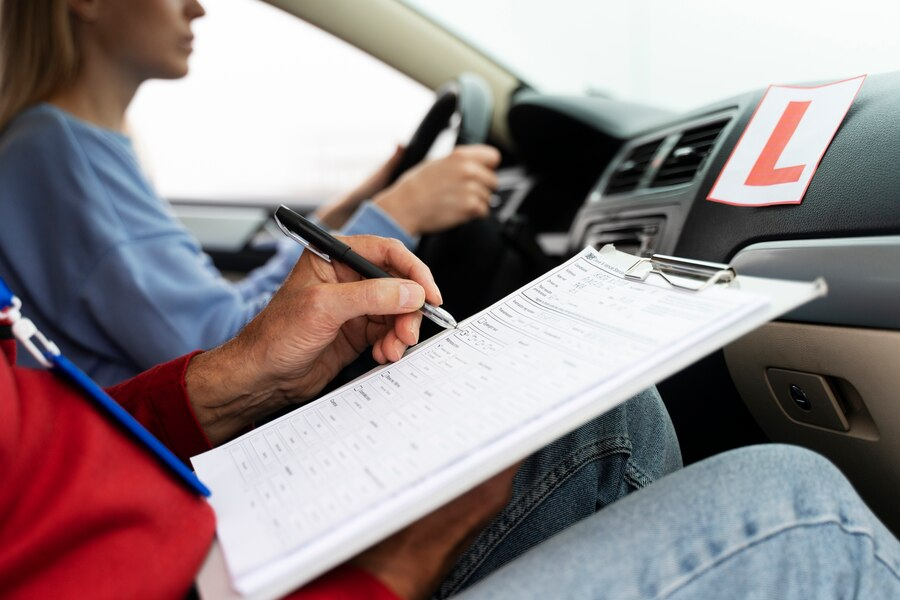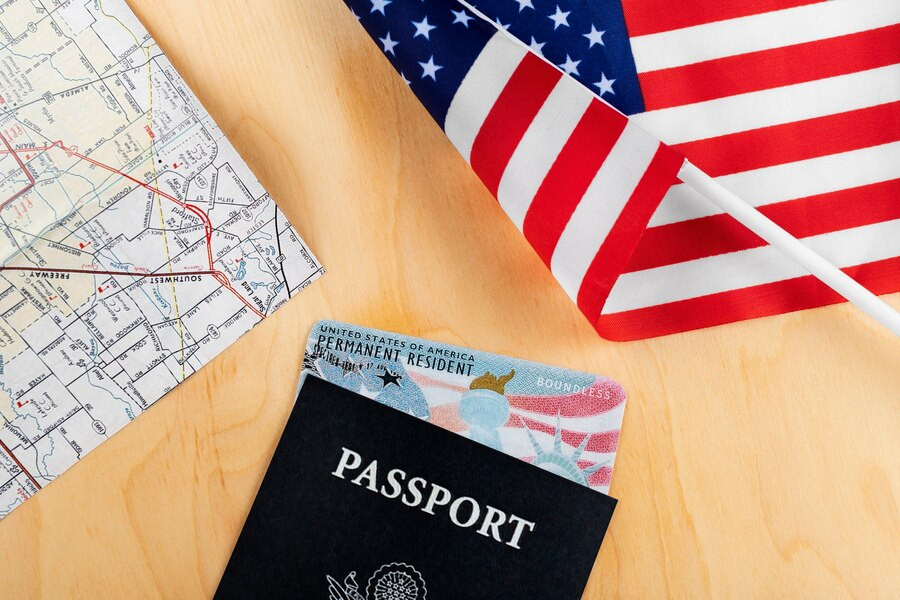Driving is a significant milestone in one’s life, and obtaining a driver’s license is the key to unlocking this new phase of independence. The driver’s test, both practical and theoretical, is the final hurdle before one can legally hit the road. One of the most common questions potential drivers have is, “How long does it take to take a driver’s test?” This article delves into the various aspects of the driver’s test duration, providing real data and insights to prepare you for what lies ahead.
Understanding the Driver’s Test
The driver’s test typically consists of two main components: a written knowledge test and a road test. The overall time to complete your driver’s test can vary significantly depending on several factors such as the state or country’s regulations, the testing center’s efficiency, and your preparedness.
The Written Knowledge Test
The written knowledge test serves as an assessment of your understanding of essential road signs, traffic laws, and safe driving practices. Here’s a detailed breakdown of this component:
- Duration: Typically, the written test is designed to be completed within 20 to 30 minutes. However, the actual duration may vary slightly depending on factors such as the number of questions and the testing environment’s efficiency.
- Format: The format of the written test typically consists of multiple-choice questions, presenting scenarios related to road signs, traffic regulations, and driving behaviors. Some tests may also include true/false questions or require you to identify road signs or signals.
- Preparation Tips: To prepare effectively for the written test, it’s crucial to study the driver’s manual provided by your local DMV (Department of Motor Vehicles). The manual contains comprehensive information on traffic laws, road signs, and driving rules specific to your jurisdiction. Additionally, taking advantage of online practice tests can help familiarize you with the format and content of the exam. Ensuring you get a good night’s sleep before the test day can also enhance your cognitive performance and retention of information.
The Road Test
The road test is where you demonstrate your practical driving skills in a real-world scenario under the observation of a certified examiner. Here’s what you need to know about this component:
- Duration: The road test typically lasts about 20 to 30 minutes, during which you’ll be evaluated on your ability to safely operate a vehicle and demonstrate proper driving techniques.
- What to Expect: During the road test, you’ll be asked to perform various basic maneuvers, including starting, stopping, parking, reversing, and navigating through traffic. The examiner will assess your ability to execute these maneuvers safely and effectively while demonstrating proper control of the vehicle.
- Evaluation: The examiner will evaluate your performance based on several criteria, including your adherence to traffic laws, proper use of signals, observation of road signs, and interaction with other road users. They’ll also assess your overall confidence, situational awareness, and composure behind the wheel.
Preparation and Scheduling
Aside from the time spent taking the tests, scheduling and waiting can add to the overall duration. Here’s what you can expect:
Scheduling
Scheduling your road test is the initial step in the process, and it’s crucial to do it well in advance to secure a convenient slot. Here are some key points to consider:
- Duration: The time it takes to schedule a road test can vary significantly based on factors such as location, demand for testing services, and availability of examiners. In some areas, you may be able to secure a slot within a few days, while in others, it could take several weeks.
- Planning Ahead: To avoid last-minute delays, it’s advisable to plan ahead and schedule your test as soon as possible. Consider factors such as your availability, the time required for additional practice, and any upcoming commitments.
- Peak Times: Certain periods, such as immediately after school vacations or holidays, tend to experience a surge in demand for road tests. During these peak times, securing a test slot may be more challenging, and wait times could be longer. Keep this in mind when planning your test date and be prepared for potential delays.
Arrival Time
Arriving at the testing center on time is essential to ensure a smooth and stress-free experience. Here’s what you need to know about arrival time:
- Early Arrival: Aim to arrive at least 15 minutes before your scheduled test time. This buffer allows you to check in, complete any necessary paperwork, and mentally prepare for the road test. Arriving early also demonstrates punctuality and professionalism.
- Paperwork: Upon arrival, you may be required to fill out paperwork related to your test, such as consent forms or identification verification documents. Arriving early gives you ample time to complete these formalities without feeling rushed or stressed.
- Mental Preparation: Use the extra time before your test to mentally prepare yourself. Take deep breaths, review important driving concepts, and visualize yourself performing well during the test. A calm and focused mindset can significantly improve your performance on the road.
Factors That Influence Test Duration

Several factors can influence how long it takes to take a driver’s test:
Testing Center Volume
The volume of testing at a particular center can have a significant impact on how long it takes to complete your road test. High-volume testing centers tend to experience longer wait times due to the sheer number of individuals seeking to take their tests. Several factors contribute to testing center volume:
- Location: Testing centers located in densely populated areas or regions with a high demand for driving tests are more likely to have higher volumes. Urban areas, for example, may have more testing center options but also higher demand, leading to potential delays.
- Seasonal Variations: The time of year can also influence testing center volume. During peak driving seasons, such as summer or holiday periods, there may be a surge in the number of individuals scheduling road tests. Similarly, just after school vacations or breaks, there might be a spike in demand as students seek to obtain their licenses.
- Day of the Week: Weekdays typically see higher testing volumes compared to weekends, as more people may be available during weekdays to take their tests. However, this can vary depending on local regulations and individual preferences.
Time of Day
The time of day at which you schedule your road test can also affect its duration. Different times of the day may experience varying levels of congestion and wait times at testing centers. Here are some considerations regarding time of day:
- Morning vs. Afternoon: Generally, mornings tend to be less crowded at testing centers compared to afternoons. Scheduling your road test for the morning hours may result in shorter wait times and a more efficient testing process. Additionally, examiners may be fresher and more alert earlier in the day, potentially leading to a smoother experience.
- Peak Hours: Be mindful of peak hours, such as lunchtime or the late afternoon, when testing centers may experience higher traffic volumes. Avoiding these peak hours can help streamline your testing experience and reduce the likelihood of delays.
- Weekday vs. Weekend: While weekdays may have higher testing volumes, weekends can also be busy, especially if individuals have limited availability during the workweek. Consider scheduling your test during less popular times to minimize wait times.
Individual Performance
Your performance during the road test itself plays a crucial role in determining its duration. The faster and more accurately you complete the required maneuvers, the quicker your road test will conclude. Here are some factors related to individual performance:
- Skill Level: Your proficiency in driving skills and familiarity with the test route can significantly impact the efficiency of the testing process. Practice beforehand to hone your skills and build confidence in your abilities.
- Confidence: Confidence behind the wheel can help you navigate the road test with ease and speed. If you feel uncertain about certain maneuvers or aspects of the test, take the time to practice and address any areas of concern before your scheduled test date.
- Attention to Detail: Paying close attention to instructions and accurately executing maneuvers can help minimize errors and reduce the overall duration of the test. Take your time to carefully follow instructions and demonstrate your understanding of safe driving practices.
Tips for a Quick and Successful Driver’s Test
To ensure that your driver’s test goes as smoothly and quickly as possible, consider the following tips:
Practice Thoroughly
Practice is undeniably the cornerstone of success when it comes to passing your driver’s test quickly and confidently. Here’s how to approach practice effectively:
- Consistent Practice: Dedicate regular time to honing your driving skills in various road and traffic conditions. Repetition is key to building muscle memory and developing a strong foundation of driving proficiency.
- Varied Scenarios: Challenge yourself by practicing in diverse environments, including urban streets, highways, and residential areas. Each setting presents unique challenges and opportunities to refine your skills.
- Mock Tests: Simulate the testing conditions by conducting mock driving tests with a qualified supervisor or instructor. Practice following test protocols, adhering to traffic rules, and executing maneuvers accurately.
- Identify Weak Areas: Pay close attention to any areas where you feel less confident or encounter difficulty during practice sessions. Target these weak areas for focused improvement to ensure comprehensive readiness for the test.
Understand the Route
Familiarizing yourself with the common routes used during road tests in your area can significantly enhance your performance and efficiency during the test. Here’s how to prepare effectively:
- Research Routes: Reach out to your driving school or testing center to gather information about the typical routes used during driver’s tests. Additionally, leverage online resources and forums to glean insights from recent test-takers.
- On-Road Experience: Actively seek opportunities to drive on the roads and streets that are commonly included in the test routes. Familiarity with the terrain, traffic patterns, and potential hazards will bolster your confidence and navigation skills.
- Route Visualization: Take time to mentally visualize yourself driving the test route, paying attention to key landmarks, intersections, and signage. Visualization can help alleviate test anxiety and instill a sense of preparedness.
- Practice Runs: Conduct practice runs on the identified test routes to familiarize yourself with the specific challenges and requirements. Strategically plan your approach to intersections, parking maneuvers, and lane changes to optimize your performance.
Documentation Ready
Preparation extends beyond mastering driving skills; it encompasses ensuring that all required documentation is readily available and organized before your test day. Here’s how to streamline the documentation process:
- Review Requirements: Thoroughly review the specific documentation requirements for your driver’s test, including identification documents, learner’s permit, proof of insurance, vehicle registration, and any additional forms mandated by your state or testing center.
- Advance Preparation: Gather all necessary documents well in advance of your test date and keep them in a secure and easily accessible location. Establishing a designated folder or pouch for your test-related paperwork can prevent last-minute scrambling and stress.
- Verification Process: Double-check the accuracy and completeness of all documents before leaving for your test. Verify that your learner’s permit is valid, insurance coverage is up to date, and any required forms are properly completed and signed.
- Arrival Protocol: Arrive at the testing center with ample time to spare, allowing for any unforeseen delays or document verification procedures. Present your documentation promptly and courteously to facilitate a smooth check-in process and set a positive tone for the test.
Conclusion
Understanding how long it takes to take a driver’s test is crucial for proper planning and stress reduction. By being well-prepared and knowing what to expect, you can efficiently manage your time and approach your test with confidence. Remember, a well-prepared driver is not just one who passes the test but also one who embarks safely on the journey of lifelong driving.
FAQ
Including waiting and test-taking time, you might spend about an hour or two at the testing center.
Yes, most states allow you to retake the test, but you might need to wait for a set period and possibly pay a retest fee.
Yes, during school breaks or after new year celebrations, more applicants can lead to longer scheduling times.
Early mornings or just after lunch are usually less crowded times.



